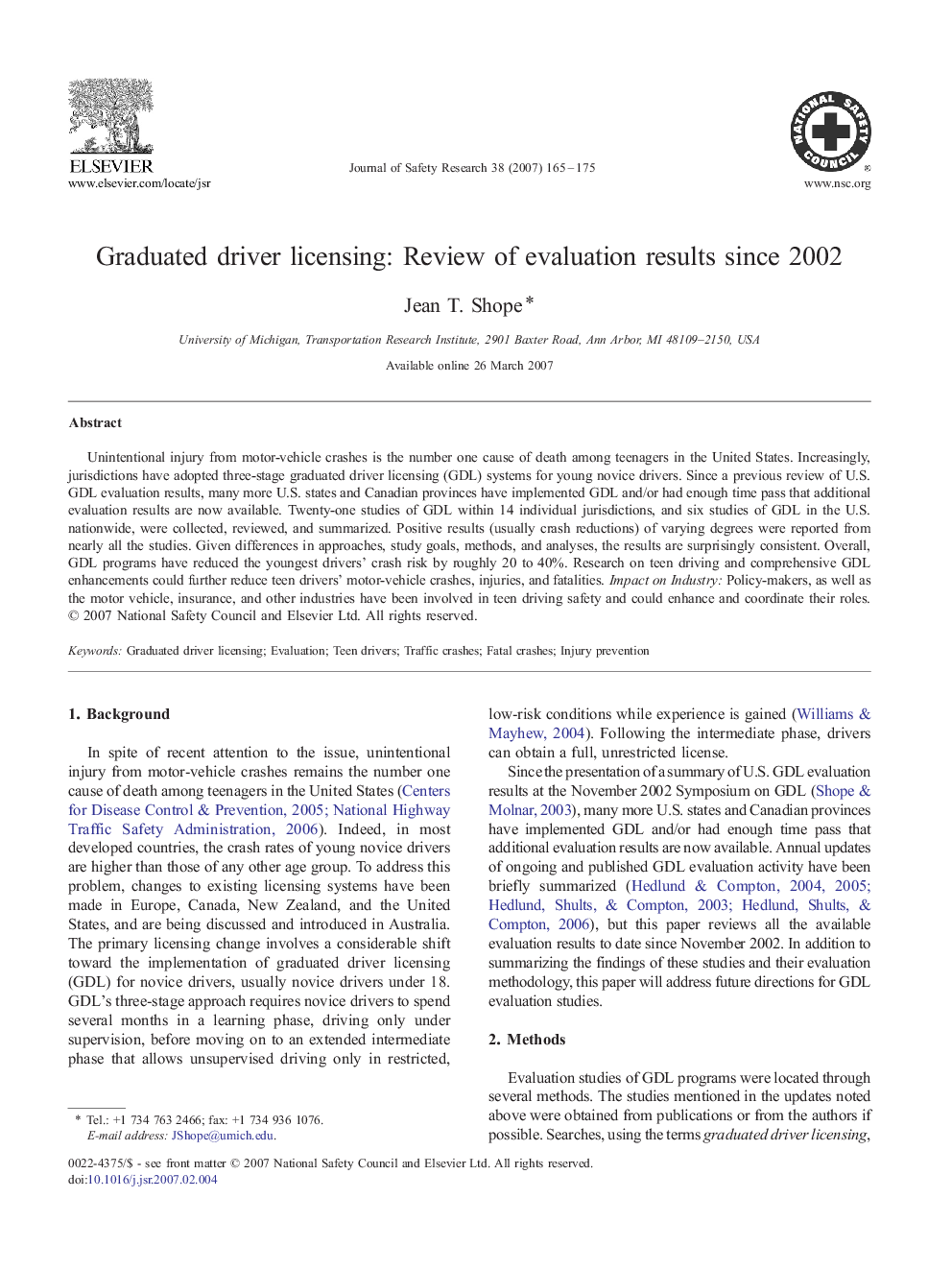| Article ID | Journal | Published Year | Pages | File Type |
|---|---|---|---|---|
| 587890 | Journal of Safety Research | 2007 | 11 Pages |
Unintentional injury from motor-vehicle crashes is the number one cause of death among teenagers in the United States. Increasingly, jurisdictions have adopted three-stage graduated driver licensing (GDL) systems for young novice drivers. Since a previous review of U.S. GDL evaluation results, many more U.S. states and Canadian provinces have implemented GDL and/or had enough time pass that additional evaluation results are now available. Twenty-one studies of GDL within 14 individual jurisdictions, and six studies of GDL in the U.S. nationwide, were collected, reviewed, and summarized. Positive results (usually crash reductions) of varying degrees were reported from nearly all the studies. Given differences in approaches, study goals, methods, and analyses, the results are surprisingly consistent. Overall, GDL programs have reduced the youngest drivers' crash risk by roughly 20 to 40%. Research on teen driving and comprehensive GDL enhancements could further reduce teen drivers' motor-vehicle crashes, injuries, and fatalities.Impact on IndustryPolicy-makers, as well as the motor vehicle, insurance, and other industries have been involved in teen driving safety and could enhance and coordinate their roles.
